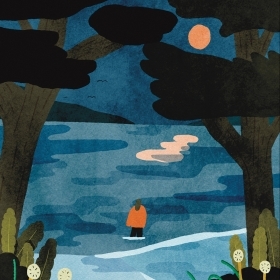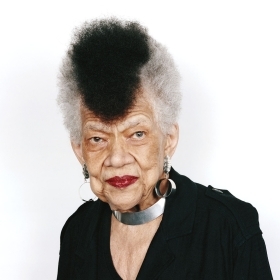I was cooking pasta in my Portland, Maine, apartment late on the evening of Wednesday, Oct. 25, after a few hours trying to make progress on a dataset for a story on pharmacies.
At 8:29 p.m., I was in the kitchen, pasta almost ready, when I heard the “ding” of an incoming work email on my phone.
Normally I don’t look at work email after hours, but it was a press release from Maine Gov. Janet Mills’ spokesperson. It was an unusual time of day for that. I opened it.
“Governor Mills Statement on Active Shooter in Lewiston.”
I pulled up the website for the Sun Journal, Lewiston’s hometown paper and my former employer for two years, before I joined The Maine Monitor, a nonprofit, investigative outlet.
“BREAKING NEWS: Multiple victims reported following shootings in Lewiston.”
An hour-and-a-half later, my editor texted me.
“Think about what story you could do tomorrow given your knowledge of Lewiston,” he said.
I jumped in my car to drive up to Lewiston. On my way out, I grabbed a granola bar and texted my roommate asking if she could move my now-cold pasta, still sitting on the burner, into the fridge.
My favorite route to Lewiston, 30 miles northwest, mostly avoids highways by snaking through small towns. I liked the drive because it was quiet and serene. But as I made my way just after 11 p.m. that night, I was on edge. It was pitch black, empty, and the rural road was blanketed with fog.
Still, after hearing about the mass shooting in Lewiston, I had to go. Although the Monitor does not usually cover breaking news, it felt wrong to sit at home while the story was developing, especially in a community I had gotten to know. Maine politicians love to say that the state is a “big small town.” I had never felt that as clearly as I did over the days that followed.
That first night, a group of reporters gathered at a family reunification site at a local middle school. I knew most of them: Some were former colleagues and officemates, some I knew from covering weekly CDC COVID briefings together. At least one was in my kickball league.
I parked next to a man waiting for his adult daughter who had been at the bowling alley where seven people were killed. When we started chatting, I told him upfront that I was a reporter. He declined to give me his name but kept talking in a nervous, my-daughter-just-survived-a-mass-shooting kind of way. Of his four daughters, the one he was waiting for was the toughest, he said. Still, he knew this would “destroy” her.
City buses filled with witnesses pulled around to the back of the middle school as their loved ones lined up out front, waiting to collect them. Law enforcement mostly kept the press far away from everyone.
As the hours went on, more press began to arrive: first from New Hampshire, then from the Boston area. At about 1:30 a.m., I drove to one of the shooting sites. It was quiet there, just a couple of cop cars and a small group of reporters. I took a few photos before I made my way home.
By the time my colleague Emmett and I stepped into council chambers at city hall the next morning, it was packed with national and international press. Just a few weeks earlier, I had sat in the same room as the sole member of the public attending a city council meeting.
On my way in, I said good morning to the assistant city manager, asked the Lewiston mayor how he and his kids were doing, and saw the recently ousted council president and newly installed successor embrace and promise to put their differences aside.
My editor had charged me and Emmett with a “city in shock” story. So after the morning press conference, we split up and walked around downtown Lewiston. I’m not usually a fan of man-on-the-street interviews, but that day, with the streets mostly empty, I found it natural to walk up to someone and ask how they were doing.
Later, I called each city councilor. They sounded tired, a far cry from the energy of the animated conversations I had with them a few weeks earlier about Lewiston’s housing woes and council factions. I wasn’t even sure what to ask them.
It wasn’t until Friday evening that the weight of it all really hit me. The public safety commissioner was listing the names of the 18 people killed, and I realized I was holding my breath. I was waiting to hear a name I recognized.
Emily Bader ’18 is an investigative reporter for The Maine Monitor, where she focuses on public health. She splits her time between Portland, Maine, and Brooklyn, N.Y.








We ask that those who engage in Wellesley magazine's online community act with honesty, integrity, and respect. (Remember the honor code, alums?) We reserve the right to remove comments by impersonators or comments that are not civil and relevant to the subject at hand. By posting here, you are permitting Wellesley magazine to edit and republish your comment in all media. Please remember that all posts are public.